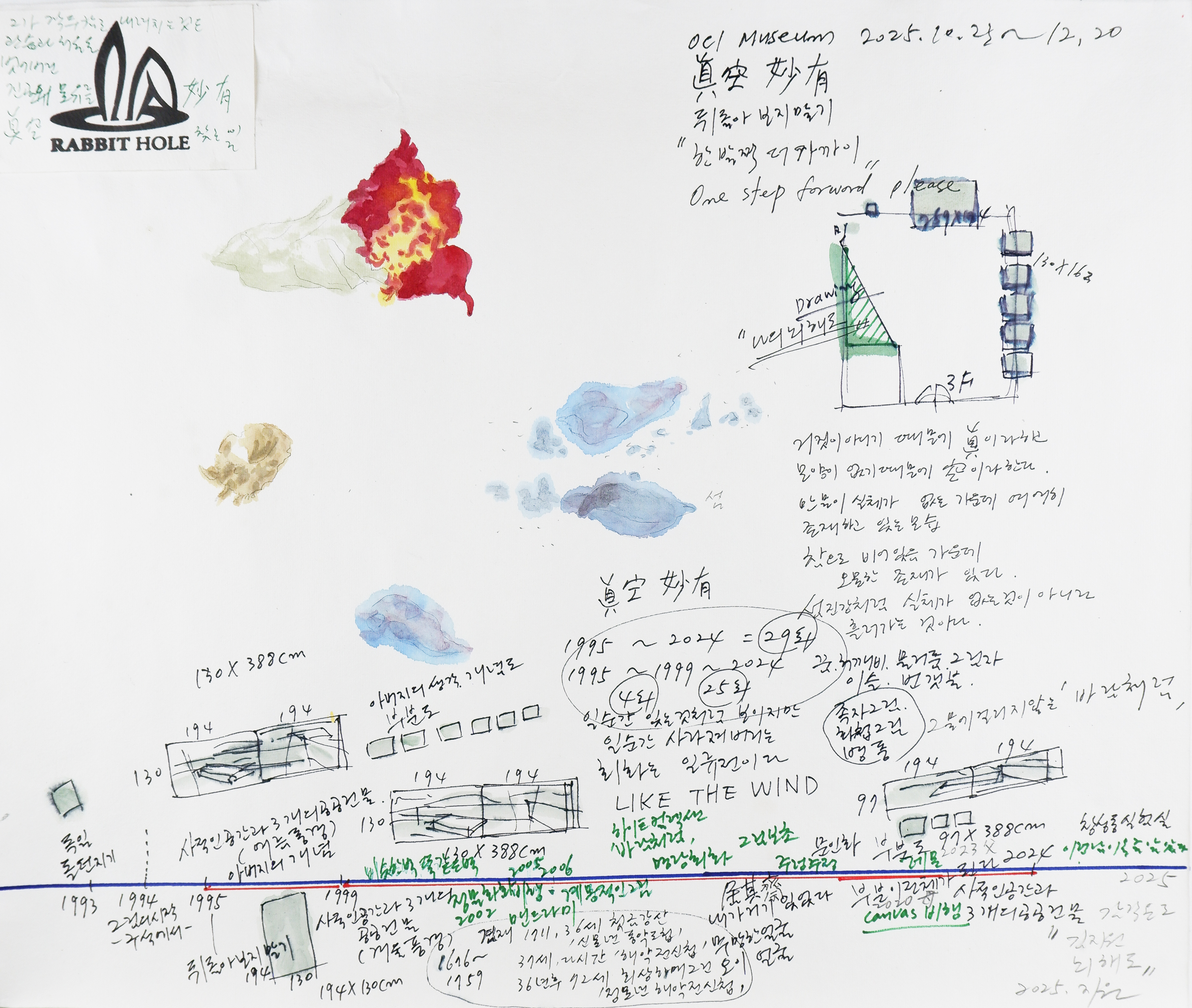전위미술의 선구자 “마지막까지 삶을 불태우겠다”
| [ARTICLES] ARTIST INSIDE 2022 | Kim Kulim
ARTIST INSIDE 2022 | 김구림
전위미술의 선구자 “마지막까지 삶을 불태우겠다”
뉴욕타임스는 올 6월 전면을 할애한 기사에서 김구림을 “한국 멀티미디어의 선구자(Founding Father of Korean Multimedia)”라고 소개했다.
오브제, 설치, 퍼포먼스 작업으로 한국 현대미술의 다양성을 이끌었던 김구림에 대한 조명이었다.
작가에 대한 국내 화단의 인식은 “김구림처럼 이상한 것을 많이 한 작가도 드물다”는 한 줄 평으로 요약된다.
회화가 주류였던 한국 미술계에서 회화를 벗어난 작업을 가장 많이 한 작가였다는 의미다.
1960년대부터 시도된 한국의 전위미술을 국외에서 주목하기 시작했고, ‘이상한 것’은 이제 그의 독자성, 남다름으로 의미되고 있다.
화제의 중심인 김구림을 그의 작업실에서 만났다.

투병 중에도 여전한 열정이 놀랍습니다. 어떤 관심사로 작업하시나요?
나는 옆에 누가 있으면 작업을 못해 조수가 없어요. 말기 암 환자인데 혼자하려니 힘들죠. 그래도 내가 어떤 세상을 살고 있는가, 계속 살펴요. 신문, 잡지 다 찾아보면서. 세상이 내 작업 원천이니 세상 돌아가는 거 보면서 영감을 얻어요.

세상을 닮아서 김구림의 작업세계도 변화무쌍했을까요?
그간 화단에선 김구림의 정체성을 묻곤 했죠. 퍼포먼스도 했다가 영상 작업도 했다가 계속 변하니까. 그런데 작가의 작품은 세상 따라 변화해야 해요. 흑백 TV 보는 사람, 칼라 TV 보는 사람, 세상 보는 눈이 같겠어요? 이제 TV가 아니라 핸드폰 들고 다니며 보는 시대면 작품도 달라져야죠. 예술은 삶인데, 과거에 머물러 있으면 매너리즘에 빠진 작가죠.

그래서 화판에 일상 사물을 붙이고, 불을 붙이기도 하셨죠.
불을 붙인 첫 작품은 영국 테이트모던(Tate Modern) 미술관이 소장하고 있어요. «태양의 죽음 1»(1964)이란 작품인데, 내가 본 죽음을 표현한 거예요. 폭력이 만연했던 때잖아요. 군대에 있을 때 나도 구타를 당해서 군병원에 입원해 있는데 옆에서 그렇게 죽어 나가요. 마음이 너무 아파서 검은 색을 많이 쓰던 때에요. 화판에 불도 붙였고요. 테이트모던은 그 작품을 퍼포먼스 요소가 있는 전위 작품으로 의미를 두고 있죠.

그 작업이 1970년 대지미술로 이어졌어요. 잔디에도 불을 붙이셨잖아요.
그렇죠. 한강 강둑에 지그재그 선을 그어서 7개 삼각형을 만들고 차례로 불을 질렀어요. 까맣게 탄 삼각형 4개와 불에 타지 않은 삼각형 3개를 남겼어요. 행위의 차이가 현상으로 나타났죠. 불에 탄 잔디도 시간이 지나면 흔적만 남길 테고. 그래서 작품명이 «현상에서 흔적으로»예요. 그렇게 다 연계된 작업인데, 내 작품세계가 그동안 이해를 못 받았어요.

말씀 듣고 보니 키아프 서울에 출품된 작품도 1960년대 작업과 연장선에 있네요.
맞아요. 회화에 사물을 붙인 콜라주 작품을 이번에 내놓았어요. 남들 대학에서 공부할 때 나는 섬유회사에서 일했으니까 1960년대 작품에서도 기계 부속품을 화판에 붙였어요. 시대상에 따라 일상을 가져오는 거예요. 나는 예술과 삶을 연결하는 매개자, 중개자죠. 이상한 걸 제일 많이 했다는 말, 그 말이 딱 맞아요.
강혜승 인터뷰, Kiaf 2022 카탈로그에 게재됨











